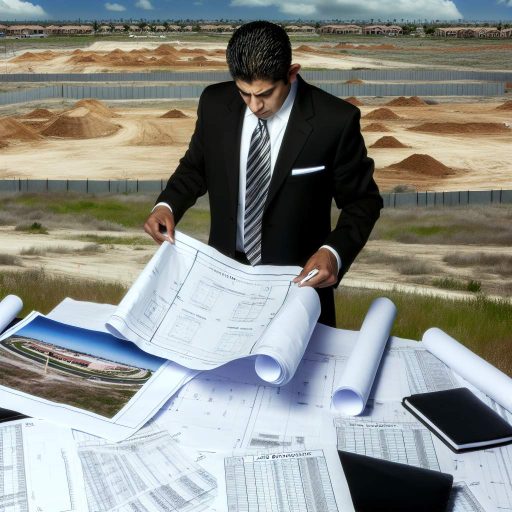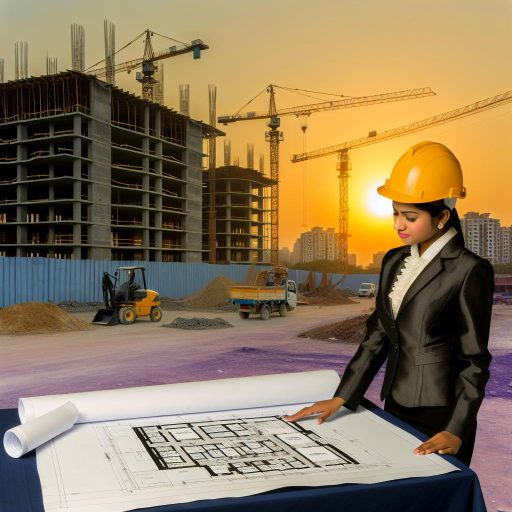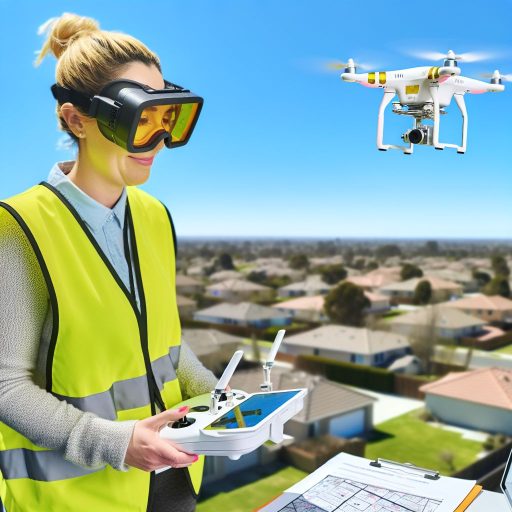Overview of Sustainability Trends in Commercial Real Estate
Shifting Market Demand
Investors increasingly prioritize sustainability in real estate decisions.
They want spaces that reflect eco-friendly practices.
Moreover, tenants now seek green buildings for their operations.
This demand drives significant changes in building designs.
Green Certifications
Many commercial properties now pursue green certifications.
LEED certification remains one of the most recognized standards.
Buildings with such credentials often command higher rents.
Furthermore, they attract a broader tenant base.
Energy Efficiency Innovations
Energy-efficient technologies are becoming commonplace.
Smart building systems optimize energy use effectively.
Consequently, they reduce operational costs for owners.
This trend supports sustainability goals while enhancing profitability.
Focus on Renewable Energy
More developers incorporate renewable energy sources.
Solar panels and wind turbines are gaining popularity.
These initiatives lower carbon footprints significantly.
They also meet regulatory requirements in some regions.
Collaboration and Partnerships
Real estate developers are forming partnerships with sustainability experts.
These collaborations enhance project planning and execution.
Additionally, they foster innovation through shared knowledge.
As a result, projects align better with sustainability goals.
Mindful Urban Development
There is a growing trend toward mindful urban development.
Developers prioritize walkability and access to public transport.
Such considerations improve community sustainability.
Mixed-use developments come to the forefront due to this trend.
Impact of Green Building Certifications on Market Value
Understanding Green Building Certifications
Green building certifications validate sustainable construction practices.
These certifications include LEED, BREEAM, and Energy Star.
They promote energy efficiency and environmental stewardship.
Certification signifies a commitment to sustainability and resource efficiency.
Market Perception and Value Enhancement
Properties with green certifications generally attract higher demand.
Tenants often prefer spaces that align with their sustainability goals.
This preference translates into higher rental prices and lower vacancy rates.
Furthermore, green buildings often achieve better resale values.
Financial Benefits of Green Certifications
Green buildings can lead to lower operating costs through energy savings.
Many certified buildings qualify for tax incentives and rebates.
These financial advantages make such properties more appealing to investors.
Moreover, lower maintenance costs and increased durability contribute to long-term savings.
Environmental and Social Impacts
Certified buildings reduce environmental footprints significantly.
They often employ sustainable materials and renewable energy sources.
This sustainability resonates with environmentally conscious consumers.
Additionally, the healthier living and working environments promote employee well-being.
Future Trends in Certification Influence
As sustainability becomes mainstream, certification importance will grow.
More businesses will seek green certifications to enhance marketability.
Investors will increasingly consider sustainability in their investment strategies.
This shift will further solidify the value of certified properties.
Role of Technology in Enhancing Energy Efficiency
Smart Building Systems
Smart building systems significantly enhance energy efficiency in commercial real estate.
These systems automate lighting, heating, and cooling based on real-time occupancy data.
Consequently, they minimize energy waste and lower operating costs.
For instance, companies like GreenTech Solutions provide advanced building management systems.
They enable property managers to monitor energy usage patterns effectively.
Renewable Energy Integration
Integrating renewable energy sources plays a crucial role in the energy efficiency landscape.
Solar panels and wind energy systems can significantly reduce reliance on traditional energy sources.
As a result, many commercial properties are transitioning to these sustainable solutions.
Additionally, innovative companies are developing energy storage technologies to optimize energy use.
Energy Management Software
Energy management software is essential for tracking and analyzing energy consumption.
This technology helps identify inefficiencies within a building’s energy use.
Furthermore, organizations like Energy Hub offer platforms that help streamline energy management processes.
Such software supports property owners in implementing strategies to enhance efficiency.
Retrofitting and Renovation Innovations
Innovations in retrofitting and renovations are transforming existing buildings into energy-efficient spaces.
Building materials have significantly evolved to include insulated windows and energy-efficient HVAC systems.
Moreover, companies like EcoBuild specialize in sustainable renovation practices.
The goal is to meet energy standards without compromising aesthetics or functionality.
Importance of Data Analytics
Data analytics enhances the understanding of energy usage patterns in real estate.
By analyzing historical energy data, property managers can make informed decisions.
For instance, predictive analytics can forecast peak usage times and optimize energy procurement strategies.
Thus, companies such as DataSmart offer robust analytics solutions tailored for commercial properties.
Role of Internet of Things (IoT)
The Internet of Things (IoT) is revolutionizing energy efficiency in buildings.
IoT devices help monitor environmental conditions and control systems remotely.
This connectivity allows for real-time adjustments and energy-saving opportunities.
Consequently, facilities can reduce downtime and enhance overall efficiency.
Uncover the Details: Renewable Energy Solutions for Commercial Real Estate Development
Government Regulations and Their Influence on Sustainability Practices
Introduction to Sustainability Regulations
Government regulations shape the landscape of commercial real estate.
They encourage the adoption of sustainable practices across the industry.
These regulations vary significantly by region and sector.
Types of Regulations
Environmental regulations focus on reducing carbon footprints.
They mandate emissions reporting and energy efficiency standards.
Building codes are also evolving to incorporate sustainable materials.
Incentives for Compliance
Many governments offer incentives for adopting green practices.
Tax breaks and grants are common incentives for real estate developers.
Such financial support encourages transitioning to sustainable practices.
Market Pressure from Regulations
Regulations often create market pressure for businesses to comply.
Failure to adapt can result in penalties and loss of credibility.
Consequently, companies prioritize sustainability to remain competitive.
Impact on Design and Construction
Regulatory guidelines influence architectural design choices significantly.
Sustainable designs now consider energy efficiency and waste reduction.
Developers are increasingly using renewable energy sources in projects.
Long-term Implications
As regulations tighten, the focus on sustainability will deepen.
This trend positively impacts property valuations and occupant satisfaction.
Investors favor properties with strong sustainability credentials.
Regulations’ Influence on a Sustainable Future
The evolving regulatory environment drives innovation in sustainability.
Ultimately, regulations help shape a more sustainable real estate market.
Find Out More: Commercial Real Estate Law for Contract Negotiations
Sustainable Construction Materials and Their Market Adoption
Introduction to Sustainable Materials
Sustainable construction materials are becoming increasingly popular in the real estate market.
These materials help reduce environmental impact and promote energy efficiency.
Moreover, they often improve the overall health of the building occupants.
Types of Sustainable Materials
Several types of sustainable construction materials are now widely available.
- Recycled materials such as glass and metal offer excellent durability.
- Bamboo and reclaimed wood provide renewable options for flooring and framing.
- Low-VOC paints and finishes enhance indoor air quality.
- Insulation made from natural fibers improves thermal performance.
Market Adoption Trends
The adoption of sustainable materials in commercial real estate has been significant.
Recent studies indicate that builders increasingly prioritize eco-friendly products.
For instance, a survey by Green Building Council revealed that over 70% of firms use sustainable materials.
This trend is due to both regulatory pressures and rising consumer awareness.
Challenges in Adoption
Despite the positive trends, challenges remain in adopting sustainable materials.
- Higher initial costs can deter some developers from choosing green options.
- Limited availability of sustainable materials in certain regions hampers progress.
- Some builders lack the knowledge to implement sustainable practices effectively.
Future of Sustainable Materials
The future of sustainable construction materials looks promising as technology advances.
Innovations continue to increase the availability and decrease costs.
As awareness grows, more companies will likely adopt these sustainable practices.
With ongoing improvements, the market will shift towards sustainability.
Delve into the Subject: Essential Due Diligence for Hospitality Property Investments in the USA

Consumer Preferences Shifting Toward Eco-Friendly Spaces
Growing Demand for Sustainable Properties
More consumers are actively seeking sustainable properties.
They prioritize eco-friendly aspects in their living and working environments.
This demand influences how developers design new buildings.
Consequently, green certification programs hold greater significance.
Many modern tenants look for properties with LEED certification.
Impact of Eco-Friendly Amenities
Eco-friendly amenities increasingly attract potential renters and buyers.
These include energy-efficient appliances and sustainable materials.
Green roofs and community gardens also appeal to environmentally conscious individuals.
Moreover, access to public transport options adds to the attractiveness of a property.
Corporate Social Responsibility in Real Estate
Companies are embracing sustainability as part of their corporate identity.
Investors increasingly scrutinize the environmental performance of their portfolios.
With this shift, many firms implement green building strategies.
These strategies positively affect their market competitiveness and reputation.
Influence of Social Media and Awareness Campaigns
Social media plays a crucial role in shaping consumer preferences.
Awareness campaigns highlight the importance of sustainable living.
As a result, individuals feel empowered to make eco-friendly choices.
This awareness extends to property selection and neighborhood development.
Future Trends in Eco-Friendly Spaces
The focus on sustainability will likely continue to grow.
Future developments will incorporate even more innovative technologies.
For instance, smart homes and buildings will become increasingly common.
This evolution will enhance energy efficiency and reduce waste.
Ultimately, eco-friendly spaces will play a significant role in the real estate market.
See Related Content: Commercial Real Estate Lease Structures for Hospitality Properties
The Financial Benefits of Sustainability in Property Management
Attracting Tenants and Increasing Demand
Sustainable properties tend to attract more tenants.
This is because renters today prefer environmentally friendly options.
Additionally, these properties often lead to reduced vacancy rates.
Thus, property owners can benefit from steady income streams.
Lower Operational Costs
Sustainable building practices reduce long-term operational costs.
For example, energy-efficient systems lower utility expenses.
Furthermore, green buildings often require less maintenance.
This translates into significant savings for property managers.
Enhanced Property Value
Investing in sustainability can enhance property value.
Green certifications add prestige and desirability to properties.
Moreover, properties with sustainability features can sell for higher prices.
This is increasingly appealing to environmentally conscious buyers.
Access to Financial Incentives
Many governments offer financial incentives for sustainable practices.
Tax credits and grants are often available for green improvements.
Moreover, many lenders provide favorable financing options for sustainable projects.
This makes initial investments more feasible and attractive.
Positive Corporate Image
Companies that invest in sustainability improve their brand image.
Doing so enhances their reputation among clients and the community.
This positive perception can lead to increased business opportunities.
Sustainability initiatives contribute significantly to long-term success.
Case Studies of Successful Sustainable Commercial Developments
Green Roofs on Urban Buildings
One notable development is the installation of green roofs in urban commercial buildings.
For example, the Vonovia Building in Germany boasts a stunning green rooftop.
This space absorbs rainwater and enhances urban biodiversity.
Additionally, it provides insulation, reducing energy consumption significantly.
Such initiatives illustrate how sustainable design can benefit both businesses and the environment.
Mixed-Use Developments in Eco-Friendly Communities
Mixed-use developments have gained popularity in sustainable urban planning.
The Dockside Green project in Canada showcases this trend effectively.
This development integrates residential, commercial, and recreational spaces.
Consequently, it promotes a walkable community, reducing reliance on cars.
Furthermore, Dockside Green utilizes energy-efficient systems and renewable resources.
Retrofitting Existing Buildings for Sustainability
Many older buildings are being retrofitted to meet modern sustainability standards.
The renovation of the Empire State Building in New York serves as a key example.
This project implemented advanced energy management systems and improved insulation.
As a result, the building reduced energy consumption by 38%.
This demonstrates the potential for existing structures to contribute to sustainability goals.
Commitment to Renewable Energy Sources
Commercial properties are increasingly committing to renewable energy sources.
The Bullitt Center in Seattle is one of the greenest commercial buildings worldwide.
It operates entirely on renewable energy, primarily sourced from solar power.
This commitment showcases how businesses can lead the way in energy sustainability.
Moreover, it inspires other developments to adopt similar renewable practices.




